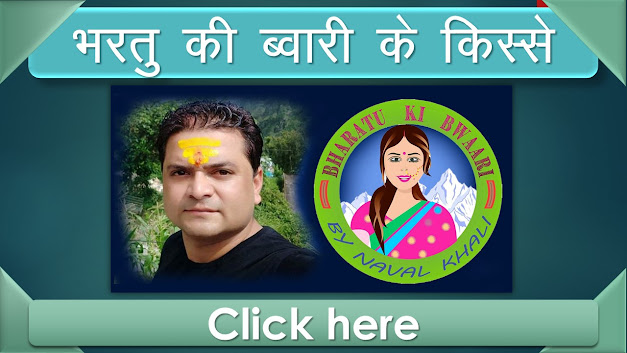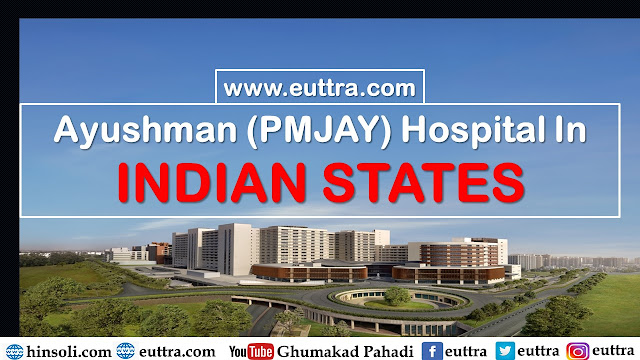
Why india celebrate 26th January as republic day and all other info
India celebrates 26th January as Republic Day to commemorate the day the Constitution of India came into effect in 1950. This marked the transition of India from a British Dominion to a fully sovereign, democratic republic.
Significance of 26th January:
-
Adoption of the Constitution:
- On 26th January 1950, the Constitution of India replaced the Government of India Act 1935, providing the framework for governance in independent India.
- Dr. B.R. Ambedkar, the chairman of the Drafting Committee, played a pivotal role in drafting the Constitution.
-
Historical Importance of the Date:
- The date, 26th January, was chosen to honor the historic Purna Swaraj Declaration (Complete Independence), which was passed on 26th January 1930 during the Lahore Session of the Indian National Congress.
-
Symbol of Sovereignty:
- By declaring India as a republic, the country affirmed its sovereignty and the commitment to equality, justice, and liberty for all citizens.
Celebrations:
The day is marked by grand celebrations, including:
- Republic Day Parade at Rajpath (now renamed Kartavya Path) in New Delhi, showcasing India’s cultural heritage, military strength, and achievements.
- The President of India hoists the national flag and gives the Republic Day address.
- Bravery awards and honors are presented to children, civilians, and armed forces.
Republic Day is a reminder of India's commitment to democracy and the rule of law.
The history of India's Republic Day is deeply rooted in the country's struggle for independence and its efforts to establish a democratic system of governance. Here’s a detailed timeline of its history:
1. The Fight for Independence:
- Before independence, India was governed by the Government of India Act, 1935, which was implemented by the British.
- The demand for complete independence (Purna Swaraj) gained momentum in the early 20th century, especially after the Lahore Session of the Indian National Congress in 1929.
2. Purna Swaraj Declaration (1930):
- On 26th January 1930, the Indian National Congress declared Purna Swaraj (Complete Independence) as its ultimate goal.
- To mark this, 26th January was observed as Independence Day every year until 1947, when India finally achieved freedom.
3. Independence in 1947:
- India gained independence from British rule on 15th August 1947. However, at that time, the country did not have its own constitution. It continued to use the Government of India Act, 1935, as the governing framework.
- The need for a permanent constitution to reflect the aspirations of an independent India became essential.
4. Drafting of the Constitution:
- On 29th August 1947, the Constitution Drafting Committee was formed, with Dr. B.R. Ambedkar as its chairman.
- The committee worked tirelessly, studying various governance models and drafting a unique constitution for India.
- The Constitution of India was adopted on 26th November 1949, but it was decided to implement it on 26th January 1950 to honor the Purna Swaraj Declaration made in 1930.
5. The First Republic Day (26th January 1950):
- On this day, the Constitution of India came into effect, replacing the Government of India Act, 1935.
- Dr. Rajendra Prasad took oath as the first President of India, marking the transition to a republic.
- The day symbolized India’s sovereignty, democracy, and commitment to justice, liberty, and equality.
Why 26th January?
- The date was chosen to honor the Purna Swaraj Declaration of 1930, which had long been a symbol of India’s aspirations for complete independence.
Legacy of Republic Day:
Since 1950, Republic Day has been celebrated annually with grandeur. It represents the ideals of the Indian Constitution, reflecting the country's diverse culture, military strength, and democratic values.
Who participate in republic day
Republic Day celebrations in India are grand and involve participation from various sections of society, government, and international dignitaries. Here’s an overview of who participates in the celebrations:
1. Government Leaders and Officials
- President of India: The central figure of the celebration, the President hoists the national flag and takes the salute during the parade.
- Prime Minister of India: The Prime Minister pays tribute to the martyrs at the National War Memorial and participates in the celebrations.
- Cabinet Ministers: Various ministers attend the event as part of the government delegation.
- Chief Ministers and Governors: They oversee Republic Day celebrations in their respective states and union territories.
2. Indian Armed Forces
- Personnel from the Indian Army, Navy, and Air Force actively participate in the parade.
- They display military strength, including tanks, missiles, and other weaponry, along with their regiments and contingents.
- The armed forces also perform motorcycle stunts, air shows, and other displays of skill.
3. Paramilitary Forces and Police
- Forces like the CRPF, BSF, and CISF, as well as police contingents, march in the parade.
- They highlight their training, discipline, and contributions to the nation’s security.
4. School Children and Cultural Groups
- Schoolchildren from across the country participate in cultural performances during the parade.
- They showcase traditional dances, music, and thematic performances based on India’s rich heritage and national unity.
5. Artists and Performers
- Professional artists and cultural groups from various states present tableaux and performances representing their regional heritage, culture, and achievements.
6. International Guests
- Every year, a Chief Guest, often a foreign dignitary (President, Prime Minister, or Monarch), is invited to attend the event as a sign of diplomatic goodwill.
- Example: In 2023, Egyptian President Abdel Fattah el-Sisi was the Chief Guest.
7. Civilians and Awardees
- Padma Awardees: Civilians honored with Padma Awards for contributions in various fields.
- Gallantry Awardees: Military and civilian personnel who receive bravery awards such as the Param Vir Chakra and Ashoka Chakra.
- Brave Children: Children who receive the National Bravery Awards also participate in the parade.
8. Citizens and Public
- Thousands of citizens attend the live celebrations at Kartavya Path (earlier Rajpath).
- Millions watch the live broadcast of the parade across the country.
9. Media and Journalists
- Media personnel cover the event extensively, ensuring the celebrations are broadcast across India and the World
Here's a detailed account of India's Republic Day history from 1950 to 2025, covering key events, Chief Guests, and significant milestones:
1. 26th January 1950: The First Republic Day
- Historical Moment: The Constitution of India came into effect.
- Key Event: Dr. Rajendra Prasad was sworn in as the first President of India.
- First Parade: Held at Irwin Stadium (Delhi) with limited resources, showcasing India's transition into a republic.
2. Republic Day Celebrations Over the Years (1950–Present)
1950–1960s: Establishing Traditions
- 1955: The first Republic Day Parade at Rajpath (now Kartavya Path) in New Delhi.
- Chief Guests included leaders like King Tribhuvan of Nepal (1951) and Malik Ghulam Muhammad of Pakistan (1955).
- India showcased its military strength and cultural diversity during these early parades.
1970s–1980s: Cultural and Military Growth
- India displayed advancements in defense technology, including indigenous missiles like Agni and Prithvi in later years.
- Focus shifted toward regional and cultural tableaux, representing all Indian states.
- Global dignitaries, including Queen Elizabeth II (1961) and President of France Valéry Giscard d'Estaing (1980), attended.
1990s: Post-Liberalization Era
- Military Strength: Focus on India's growing defense capabilities.
- 1991: India invited Mauritius President Anerood Jugnauth as the Chief Guest, symbolizing India's ties with the Indian Ocean Region.
- Increased emphasis on economic reforms and progress after liberalization.
2000s: Technological and Cultural Modernization
- Republic Day parades began featuring ISRO achievements, like the Chandrayaan-1 mission.
- Global Guests: President Vladimir Putin (Russia) in 2007 and Barack Obama (USA) in 2015 marked closer international ties.
2010s: Strengthening Diplomacy
- Republic Day reflected India's global outreach, with leaders from ASEAN, European Union, and Africa attending.
- 2018: India hosted all 10 ASEAN leaders as Chief Guests to highlight the Act East Policy.
- Introduction of women-led contingents and participation in the parade.
2020–2025: Recent Developments
- 2020: Brazilian President Jair Bolsonaro was the Chief Guest.
- 2021: Due to COVID-19, celebrations were scaled down, and UK PM Boris Johnson canceled his visit.
- 2022: A shift toward self-reliance with displays of indigenous defense equipment.
- 2023: Egyptian President Abdel Fattah el-Sisi was the Chief Guest.
- 2024–2025: Celebrations highlight India's Digital India, space missions like Chandrayaan-3, and India's G20 presidency.
Key Themes and Features of Republic Day
-
Military Strength:
- Display of tanks, missiles, and fighter jets like Rafale, Tejas, and Sukhoi.
- Participation by armed forces and paramilitary contingents.
-
Cultural Heritage:
- Tableaux from Indian states and union territories.
- Performances by schoolchildren representing national unity and diversity.
-
Gallantry Awards:
- Presentation of Param Vir Chakra, Ashoka Chakra, and other awards to armed forces and civilians.
-
Bravery Awards for Children:
- National Bravery Award recipients are honored for extraordinary courage.
-
Chief Guests:
- International leaders are invited to strengthen diplomatic ties.
- Guests include monarchs, presidents, and prime ministers.
-
National Achievements:
- Showcasing milestones in space technology, agriculture, and infrastructure.
Major Milestones of Republic Day
- 1950: Constitution implemented.
- 1965: Hindi declared the official language of India.
- 1971: Republic Day parade honored the victory in the India-Pakistan War.
- 1997: Golden Jubilee of Independence celebrated.
- 2022: The Kartavya Path was introduced, replacing Rajpath, symbolizing duty and responsibility.
Republic Day 2025
While the exact details of the 2025 Republic Day will unfold closer to the date, the focus will likely include:
- India's advancements in space exploration, including Aditya-L1 and upcoming ISRO missions.
- Showcasing India's AI and technology-driven development.
- Representing India's growing global leadership as highlighted during its G20 presidency.
Republic Day remains a significant occasion to reflect on India's journey, unity in diversity, and commitment to its Constitution and democratic values.










Follow Us